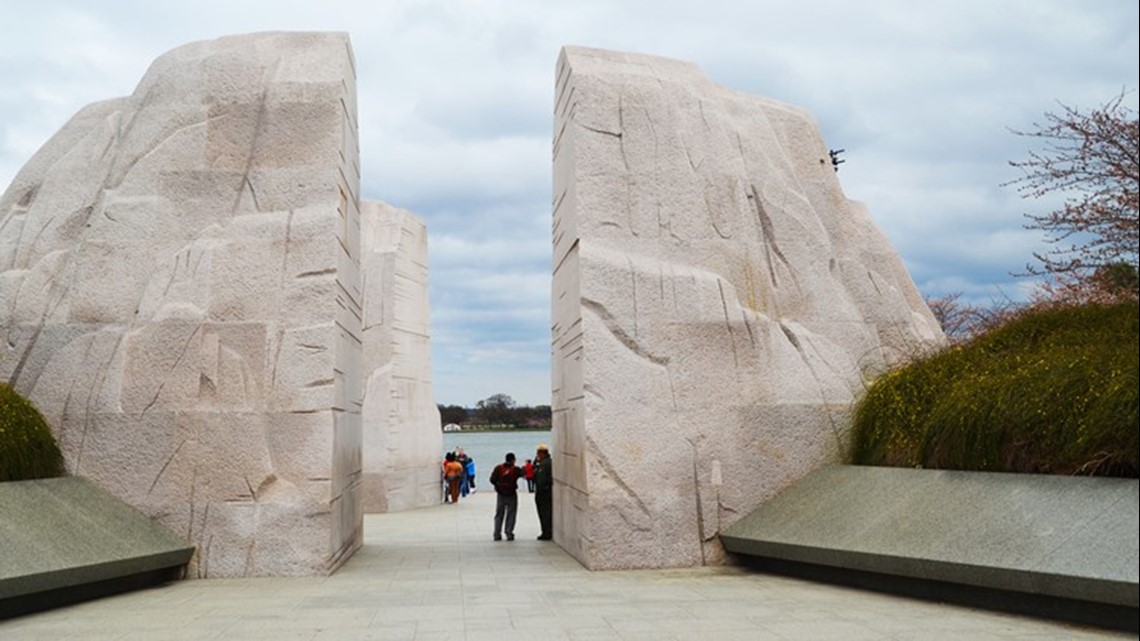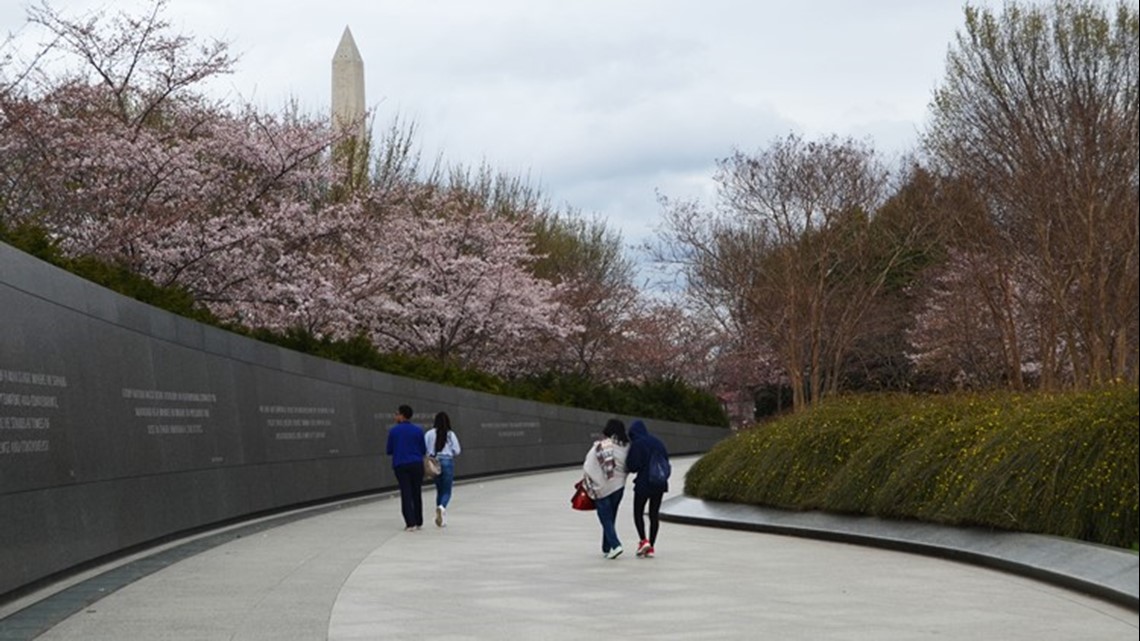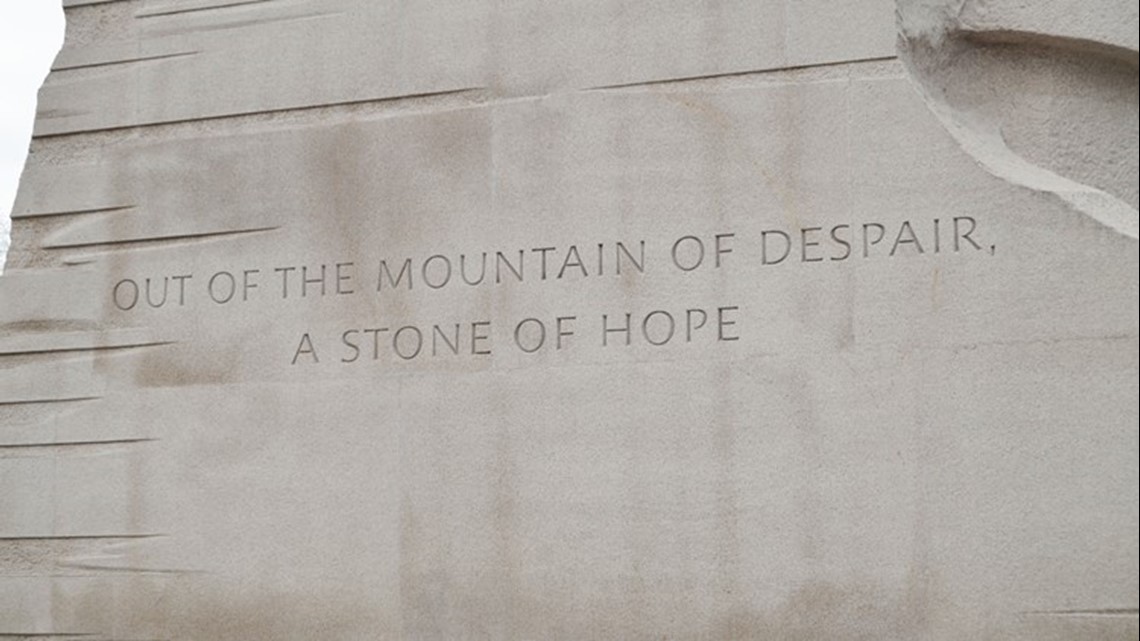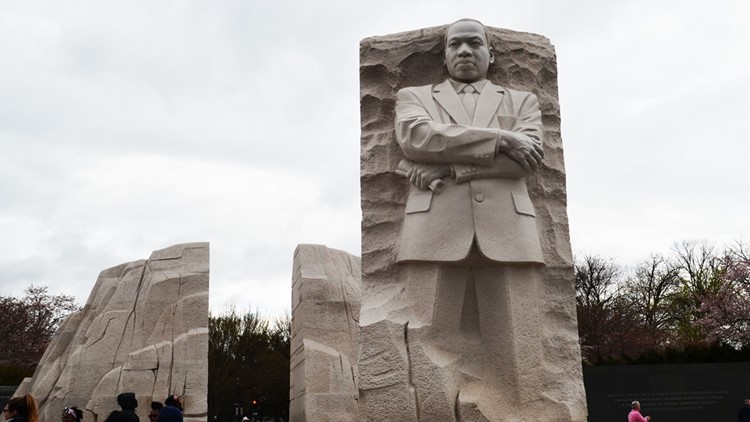WASHINGTON — It's a special place for reflection and contemplation in Washington, D.C.
Just off the well-treaded paths of the National Mall lies a somewhat quieter monument, set between a park and large pond.


Overlooking the Tidal Basin sits the Martin Luther King Jr. Memorial. Visitors come for a fantastic view of the cherry blossoms and to pay homage to one of the greatest civil rights leaders in U.S. history.
The memorial stands as a testament to the life of a man who left an unforgettable mark on the history of the United States. Regal and resolute, it captures both the tragedy and triumph of Dr. King's life.
"It's a place to reflect on what comprises the American story at its both good and bad points," said Mike Litterst, a spokesman for the National Park Service.


The memorial was designed to physically represent a quote from King's famous "I have a dream" speech: "Out of a mountain of despair, a stone of hope."
Sculptor Lei Yixin depicted a granite statue of King emerging as a "stone of hope" from a symbolic "mountain of despair." The roughly hewed edges depict the difficult journey, while the entrance conjures the openness of democracy.


The memorial is noteworthy as the first major monument on the National Mall dedicated to an African American and non-president, according to Litterst. Its dedication date in 2011 was on the 48th anniversary of the March on Washington for Jobs and Freedom. The monument's address, 1964 Independence Ave. SW, is a nod to the Civil Rights Act of 1964.
Quotes line the walls around the sculpture and invite visitors to reflect on the life and legacy of the leader.
The activist and minister advocated for jobs, voting rights, the elimination of poverty, and other issues of equality, dedicating much of his life to the fight for civil rights. He used nonviolent methods to achieve change, including protesting, boycotting and striking.



